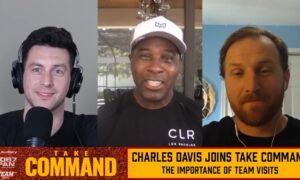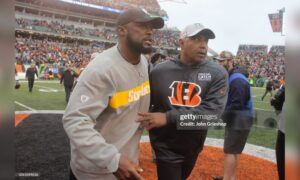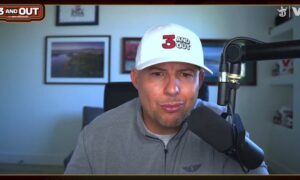With the 2014 NFL Draft coming up in a bit, and having finished taking stock of the Pittsburgh Steelers’ roster, it’s now time to look back and see how the team assembled the roster they currently have through the draft.
It would be most simple to set a dividing line at 2007, the year Mike Tomlin took over at head coach, so we will revisit the past seven drafts, encompassing 59 selections, to see how the team treated each position, and look into why that is.
The next position we’ll revisit is running back. As you can see below, the Steelers addressed the running back position in every draft from 2008 up through 2013, which accounts for all but Tomlin’s first year on the job, during which Willie Parker was still among the best running backs in the league.
2008 – Rashard Mendenhall – 1st round (23)
Even though Parker was still performing at a high level, Tomlin decided that he wanted to surround Ben Roethlisberger with offensive weapons, and that included a running back in the first round in Rashard Mendenhall.
Mendenhall was limited to four games as a rookie after getting knocked out for the year against the Ravens. After a stumble or two in his sophomore season, however, he took over the starting job from Parker and had some very successful games, rushing for over 1000 yards in 12 starts with a healthy 4.6-yard average. He followed that up with almost 1300 yards and 13 touchdowns the year after.
2011 was an up and down year, but it ended in a torn ACL, and he was never quite the same thereafter. In 2012, he kept having injury setbacks and ultimately was benched, and then suspended a game for not showing up. After playing out his rookie contract, he muddled through a season in Arizona before retiring just recently.
2009 – Frank Summers – 5th round (169)
Frank Summers was drafted to play the role of fullback. That plan was scrapped after suffering a back injury that ended his rookie season just 13 snaps in. David Johnson took over the fullback role and Summers didn’t make the roster the next year. He’s recently resurfaced in Buffalo, where played over 200 snaps last season.
2010 – Jonathan Dwyer – 6th round (188)
Jonathan Dwyer was certainly the most successful of the many running backs taken toward the back end of the draft for the Steelers recently. For his career, he’s rushed for 971 yards on 230 carries for a 4.2-yard per carry average, including two touchdowns, making six starts. He chose to try his luck in Arizona this year rather than re-sign with the Steelers.
2011 – Baron Batch – 7th round (232)
Baron Batch was supposed to be an elusive receiving back, and reportedly looked impressive during his rookie offseason, but he suffered a torn ACL before ever getting started. He looked far less impressive in his second year. He averaged just barely two yards per carry in limited snaps in 2012 and also dropped a wide open pass on a gadget play. He was released during the season and is now likely out of the league for good.
2012 – Chris Rainey – 5th round (159)
Chris Rainey seemed like he might be done after one season too, but the Colts have given him a second chance. With the Steelers, he seemed to go down instantly upon first contact on a regular basis. He was simply too small to run between the tackles. He had dynamic potential, especially as a returner, but it never coalesced. Plus he fumbled four times in 2012.
2013 – Le’Veon Bell – 2nd round (48)
After a number of failures to secure some quality depth at the back end of the draft, the Steelers finally went back to the top of the draft to find a running back, and came up with Le’Veon Bell, who seems to have the potential to become one of the better backs in the league.
After overcoming an injury that kept him out of the first three games, Bell started the other 13 and slowly built up steam as the season progressed. He is a good zone runner due to his excellent patience and has the ability to emerge as an every-down back with his receiving and blocking abilities. He has an impressive combination of size and agility, and he still has room to grow.







